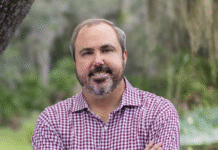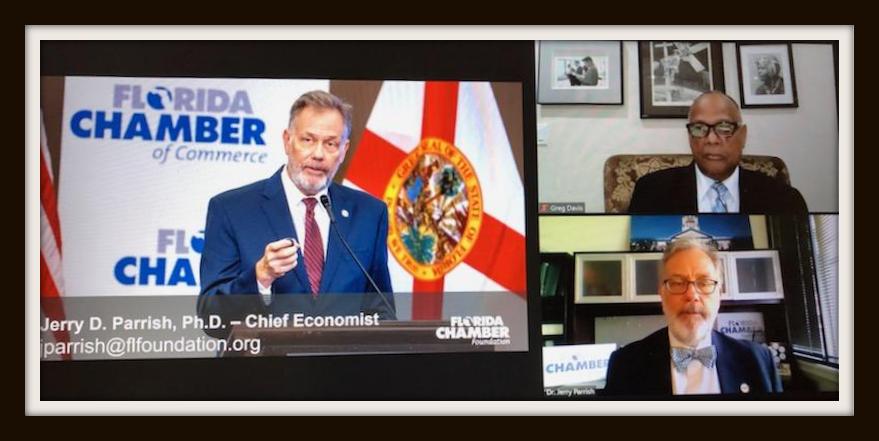Tallahassee/Palm Coast, FL – When thinking about sitting through a Zoom meeting with an economist, the first thing that probably pops into mind is comedian Ben Stein from Ferris Bueller’s Day Off droning on and on … Bueller, Bueller … however, Dr. Jerry Parrish, chief economist for the Florida Chamber of Commerce Foundation was anything but boring during his presentation on Wednesday for the Flagler Tiger Bay Club.
Numbers nerds and data junkies were able to soak up their fill of what’s happening with Florida’s economy from pre-COVID numbers to growth forecasts, as Parrish referenced county-specific facts and figures during the lunch hour meeting.
Good news came down the pipeline with the $1.9 trillion COVID stimulus package, taking Florida from a $2 billion budget deficit to a surplus, something officials like Visit Florida CEO Dana Young are thankful for as the governor rolled out his stimulus budget recommendations this week. Among the major funding priorities like deep water ports and infrastructure, an additional $50 million was included for the state’s tourism arm.
During his presentation, Parrish noted the hospitality and leisure sector had been hit hard by the pandemic as he shared a look at the numbers from January 2020 to January 2021.
“More than 1 out of 5 leisure and hospitality jobs that were here last year are not here,” said Parrish, with food services down 15%, accommodation 45%, amusement parks down nearly 60%, year-over-year, while financial activities, construction, and manufacturing fared far better during the pandemic.
Cautiously optimistic, Parrish expects to see the tourism industry and airport traffic rebound quicker than the forecasted 2024 numbers, perhaps as early as mid-to-end year 2023, as the vaccine is deployed on a larger scale globally.
“Tourism is super important for the state of Florida. It doesn’t just drive those leisure and hospitality jobs because there are multiplier effects that go throughout the economy,” said Parrish. “You’ve got to remember that tourists bring in about $6 billion a year in state tax revenue and about $5.3 billion in local tax revenue, so they’re super important for tax revenues.”
While hovering at about 4.8% unemployment, Monday’s release of the 2020 jobs numbers showed eight months of private sector job growth for the 17th largest economy in the world, with 371,000 jobs available across the state. Parrish also noted a recent influx of high wage jobs, categorized by those earning $60,000 or more.
“Florida actually has more high wage jobs than we did back then before COVID and that’s happened since around the end of May of last year,” he said, touting the state’s top five placement for return of GDP and total economic activity.
“Before COVID, since 2015 Florida created more than one out of every 11 jobs in this country,” explained Parrish. “And that’s a big deal because Florida’s about five percent of the U.S. economy.”
Closing with a look at potential future challenges, it’s a collaborative effort by Floridians to achieve the strategic goals set out in the Florida 2030 blueprint known as Florida 2030 that he’s focusing on.
“We want to have the number one business climate, we want our state agencies to be aligned with these goals,” he said. “We want our state to be number one for a lot of things, but we also have education goals. We want our kids ready for kindergarten when they show up and one hundred percent of our third graders reading at grade level.”
Supporting the Florida Chamber’s six identified pillars that include talent, economic development, infrastructure, competitiveness, civic and governance, and quality of life, the metrics are measured by specific benchmarks found in The Florida Scorecard, and Parrish encouraged listeners to take a look as they prepared for the future.
“There’s tens of thousands of pieces of data on here both at the state level and at the county level,” he said. “What’s even more important is how are we going to be ready for the next visitors that are coming here.”










































